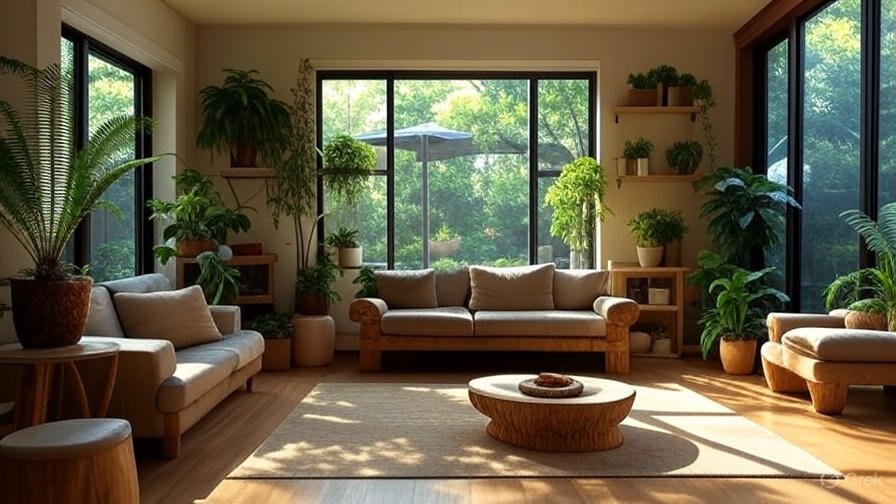In recent years, biophilic design has emerged as a transformative approach to interior spaces, blending the calming and rejuvenating qualities of nature with modern living. This design philosophy, rooted in the human need to connect with the natural world, is no longer reserved for high-end homes or sprawling estates. With a bit of creativity and resourcefulness, anyone can bring the essence of biophilic design into their home without breaking the bank. As wellness and sustainability take center stage in 2025, here’s how you can embrace this trend affordably. For those looking to explore whole home customization China, there are innovative solutions to integrate biophilic elements seamlessly.
What Is Biophilic Design?
Biophilic design is more than just adding a few houseplants to your living room. It’s a holistic approach that incorporates natural elements, patterns, and materials to foster a sense of calm, improve mental well-being, and enhance productivity. The term “biophilia,” coined by biologist E.O. Wilson, refers to humanity’s innate affinity for nature. Biophilic design translates this connection into practical applications for homes, offices, and public spaces.
Key principles include maximizing natural light, using organic materials like wood and stone, integrating greenery, and mimicking natural patterns, such as curves and fractals. While custom-built biophilic homes can be costly, budget-friendly alternatives allow homeowners to achieve similar effects without major renovations.
Why Biophilic Design Matters in 2025
With urban populations growing and many people spending more time indoors, the need for environments that promote well-being is critical. Studies show that exposure to natural elements can reduce stress, lower blood pressure, and improve focus. In a world increasingly dominated by screens and concrete, biophilic design offers a way to reconnect with the outdoors, even in small apartments or modest homes.
Moreover, sustainability is a driving force in home design this year. Budget-conscious biophilic design aligns with eco-friendly practices by encouraging the use of secondhand materials, locally sourced plants, and energy-efficient solutions like natural lighting. This makes it an accessible trend for renters, first-time homeowners, and design enthusiasts alike.
Budget-Friendly Ways to Incorporate Biophilic Design
Transforming your home with biophilic principles doesn’t require a complete overhaul. Here are practical, low-cost strategies to bring nature indoors:
1. Embrace Houseplants Strategically
Plants are the cornerstone of biophilic design, and they’re one of the most affordable ways to start. Instead of splurging on rare or exotic varieties, opt for low-maintenance plants like pothos, snake plants, or spider plants, which thrive in various conditions and are widely available at garden centers or even grocery stores. Prices for these can range from $5 to $20.
To maximize impact without cluttering your space, group plants in clusters to mimic natural growth patterns. Repurpose old containers, such as mason jars or thrifted ceramic pots, as planters to save money. For renters, hanging plants or wall-mounted planters can add greenery without taking up floor space.
2. Maximize Natural Light
Access to natural light is a core element of biophilic design, as it regulates circadian rhythms and boosts mood. If your home has limited windows, use sheer curtains or remove heavy drapes to let in as much light as possible. Mirrors, available at thrift stores for as little as $10, can be strategically placed to reflect light and make spaces feel larger.
For a creative touch, consider DIY light filters using translucent materials like rice paper or lightweight fabric to soften harsh sunlight while maintaining brightness. These projects can cost under $15 and add a natural, organic feel to your windows.
3. Use Natural and Upcycled Materials
Wood, stone, and natural fibers like jute or cotton are staples of biophilic design, but they don’t have to be expensive. Visit thrift stores, flea markets, or online marketplaces to find secondhand wooden furniture, such as coffee tables or shelves, which can be sanded and stained for a fresh look. A small wooden side table can often be found for $20 or less.
Upcycle pallets or crates into shelving units or plant stands for a rustic aesthetic. Incorporate natural textures through affordable finds like woven baskets ($5–$15) or jute rugs, which add warmth and mimic the organic feel of the outdoors.
4. Mimic Nature with Patterns and Colors
Biophilic design often incorporates patterns inspired by nature, such as fractals, waves, or leaf motifs. Instead of investing in new wallpaper, use removable wall decals or stencils to create subtle natural patterns. A pack of decals can cost as little as $8 online.
Color palettes inspired by nature—think earthy greens, soft blues, and warm browns—can transform a room. If repainting isn’t an option, add these hues through throw pillows, blankets, or artwork. Thrifted frames paired with free downloadable nature prints can create a gallery wall for under $30.
5. Create a Nature-Inspired Focal Point
A single statement piece can tie a room together. Consider a DIY project like a moss wall frame, made by gluing preserved moss (available for $10–$15 per bag) onto a thrifted picture frame. Alternatively, arrange driftwood, collected from a beach or purchased inexpensively, into a sculptural display.
Water features, another biophilic element, can be mimicked with a small tabletop fountain, which can be found for $20 or less. The sound of trickling water adds a calming effect without the expense of a built-in feature.
Challenges and Considerations
While biophilic design is adaptable, there are challenges to consider. Renters may face restrictions on painting or drilling for shelves, so prioritize non-permanent solutions like command hooks or freestanding furniture. Additionally, maintaining plants requires time and knowledge, so start with hardy varieties to avoid costly replacements.
Budget constraints can also limit material choices, but focusing on small, impactful changes—like a single plant cluster or a thrifted rug—can still create a biophilic effect. Patience is key; building a nature-inspired home is a gradual process that rewards creativity.
The Future of Biophilic Design
As sustainability and wellness continue to shape home design trends, biophilic design is expected to grow in popularity. Innovations like modular plant walls and affordable smart lighting that mimics natural daylight are making it easier for budget-conscious homeowners to adopt this approach. For inspiration, platforms like Green Living Magazine highlight emerging trends in eco-conscious design. In 2025, expect to see more DIY tutorials and secondhand marketplaces catering to biophilic enthusiasts, further democratizing the trend.
Conclusion
Biophilic design offers a powerful way to enhance your home’s ambiance while staying mindful of both your budget and the environment. By incorporating affordable plants, natural light, upcycled materials, and nature-inspired patterns, you can create a space that feels connected to the outdoors without spending a fortune. As this trend continues to evolve, it’s clear that bringing nature into your home is not just a luxury—it’s an accessible path to a healthier, more balanced lifestyle.



